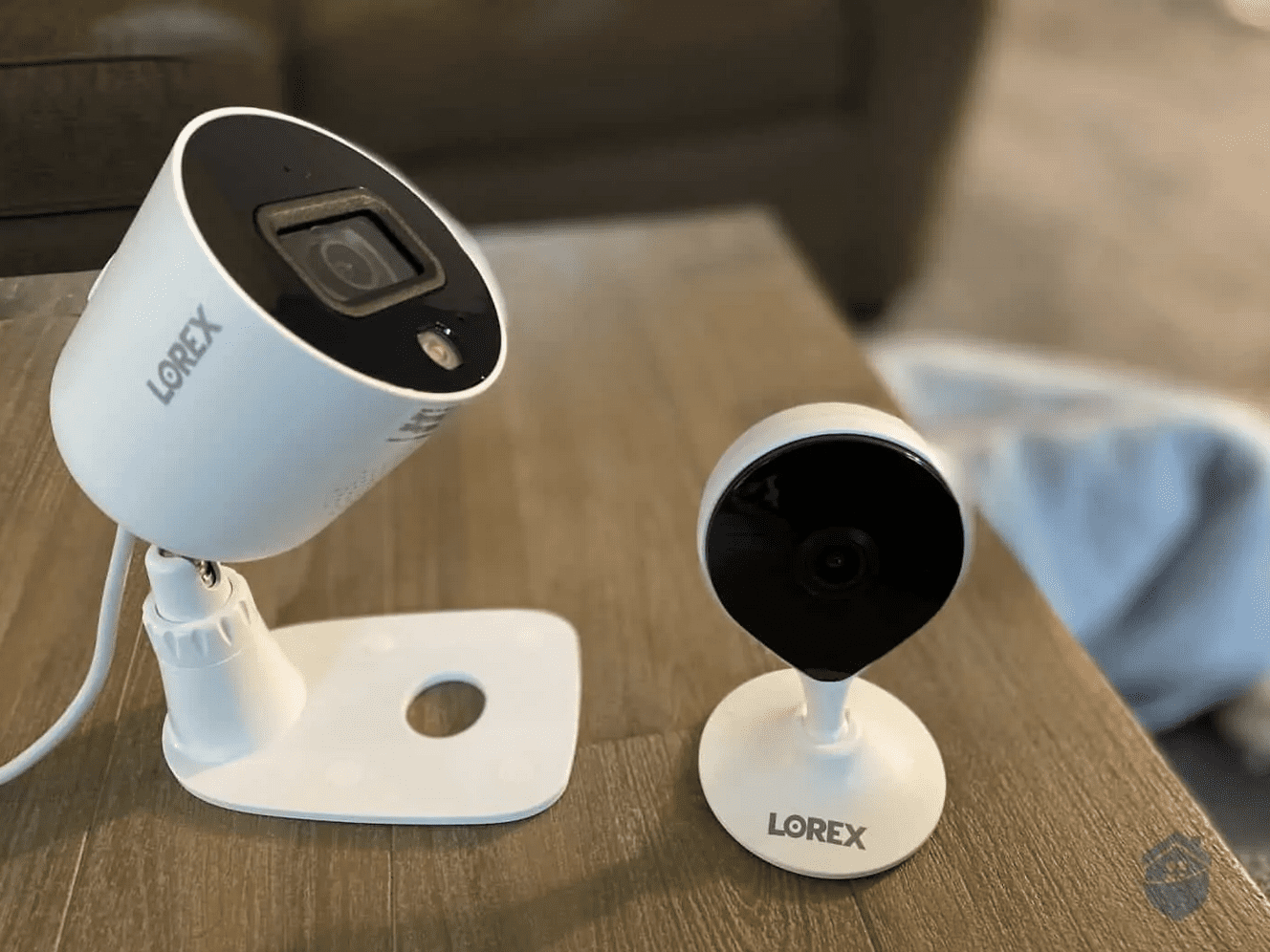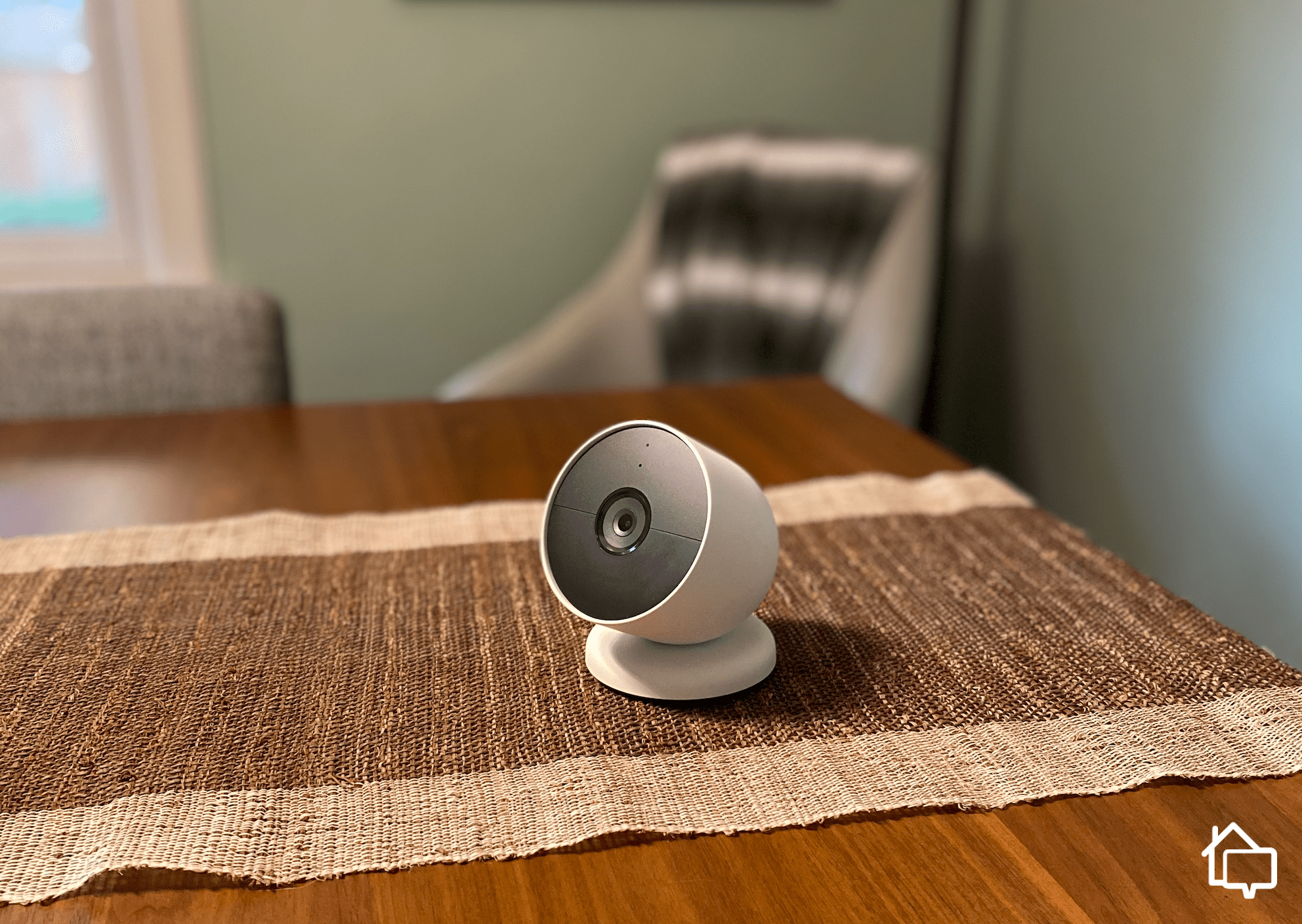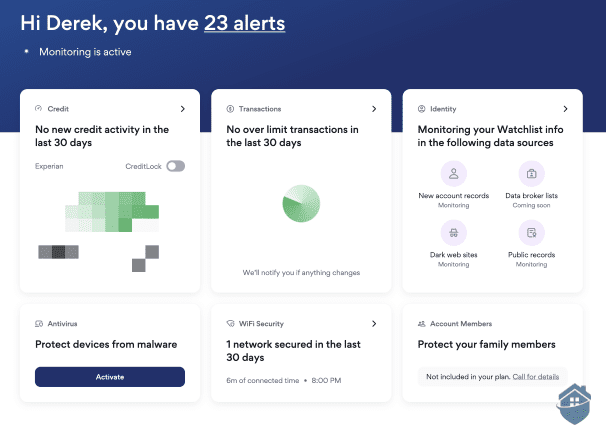Carbon monoxide poisoning sends over 100,000 Americans to the emergency room each year.1 Traditional CO monitors sound an alarm when dangerous levels are detected, but what happens when you’re not home to hear it? Smart carbon monoxide monitors with mobile alerts solve this critical safety gap by sending immediate notifications to your smartphone, no matter where you are.
We tested eight smart carbon monoxide monitors to find the key features that make your family safer. Our team also spent a year testing a single model to create a foolproof maintenance schedule you can follow. Let’s dig in.
>> Learn About: What Do Carbon Monoxide Detectors Do and How Do They Work?
Why Mobile Alerts Matter for CO Detection
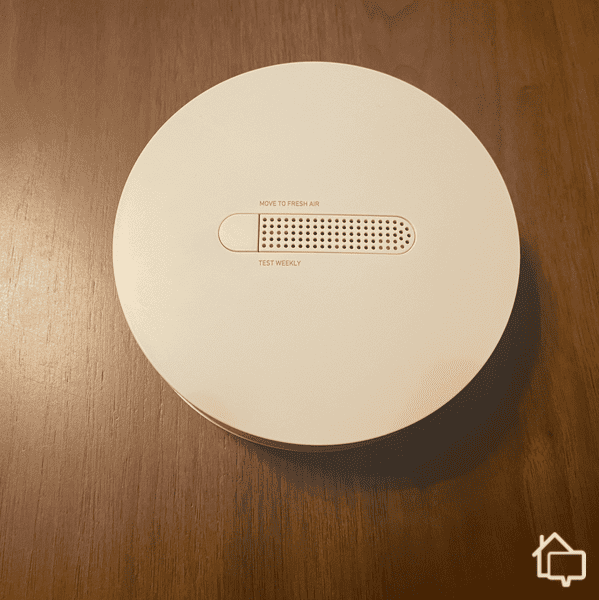
Our SimpliSafe Smoke & CO Detector sent us alerts directly through the SimpliSafe app.
Carbon monoxide is invisible and odorless. It can reach lethal levels within hours. Unlike smoke from a fire, CO gives no obvious warning signs until symptoms appear, and by then, a hospital visit may already be required.
Mobile alerts transform your CO monitor from a passive alarm into an active safety system. When dangerous levels are detected, you receive instant notifications that allow you to:
- Contact emergency services immediately, even when away from home
- Alert family members who might be inside
- Save pets left at home
- Make informed decisions about entering the property
- Monitor air quality before it become dangerous
Safety Tip: Install smart CO monitors near bedrooms and on every level of your home, including basements where gas appliances are typically located.
Key Features for Smart CO Monitors That We Recommend
Through our time testing smart CO monitors, we found that these four features are the most essential:
Detection Technology
Modern CO monitors use electrochemical sensors that react to carbon monoxide presence. When they detect the toxic gas, they generate an electrical current proportional to the gas concentration. Manufacturers claim that they can give accurate readings between 30 and 999 parts per million (ppm).
We suggest looking for sensors certified by Underwriters Laboratories (UL) to Standard 2034. This standard ensures the device meets rigorous safety and performance requirements.2 UL certification also guarantees the CO monitor will alert you before CO reaches immediately dangerous levels.
FYI: Even at 35 ppm, CO can be harmful if you’re exposed over long periods. At 150 ppm and above, it can already cause symptoms such as headache and nausea to start. Hours of exposure can even be fatal. Immediate danger level starts at 400 ppm.
Connectivity Options
It’s also important to know how your smart CO monitor connects to your mobile device. We found that models connected via Wi-Fi and cellular signals offer the best protection because they can alert you no matter where you are. Bluetooth-connected models, on the other hand, are best if your only concern is monitoring CO levels while you’re home due to Bluetooth’s limited range.
- Wi-Fi connectivity offers the most features and fastest alerts but depends on your home internet connection. Most Wi-Fi models include backup options for continued operation during outages.
- Cellular connectivity provides reliable alerts independent of your home internet but may require monthly service fees. This option works well for vacation homes or areas with unreliable internet service.
- Bluetooth connectivity offers basic smart features at lower cost but requires your phone to be within range (typically 100 feet) to receive alerts.
Mobile App Functionality
The best CO monitor apps provide more than basic notifications. We found other useful app features such as:
- Real-time CO level readings and trends
- Historical data tracking to identify patterns
- Multiple notification methods (push, text, email)
- Family member alert sharing
- Integration with smart home platforms
Testing Tip: Test the app interface before purchasing a smart CO monitor, as you’ll rely on it for critical safety information. The most effective apps balance comprehensive features with intuitive design.
Power Options
Smart CO monitors require consistent power to maintain connectivity and provide reliable alerts. We recommend hardwired models with battery backup because they offer the most functionality without sacrificing reliability. These are the three different options, though:
- Hardwired models connect to your home’s electrical system and include battery backup for power outages. These units provide the most reliable operation but require professional installation in most cases.
- Battery-powered models offer easier installation and work in any location. Modern units use 10-year sealed lithium batteries that eliminate the need for regular battery changes.
- Plug-in models work well for areas with available outlets but lack backup power during electrical outages, making them less reliable. We don’t recommend these models.
Expert Insight: Gas and diesel-powered generators produce CO. This heightens the risk of CO poisoning during extended power outages. That’s why we don’t recommend CO monitors that rely only on your home’s electrical system.
Installation and Setting Up CO Monitors
After installing eight different smart CO detectors in our home, we picked up a few tips and tricks along the way.
Planning Your Installation
Proper placement is critical for effective CO detection. We recommend installing CO monitors:
- On every level of your home, including basements
- Within 15 feet of sleeping areas
- At least 15 feet away from fuel-burning appliances
- On walls or ceilings, following manufacturer specifications
Conversely, you must avoid installing CO monitors in:
- The garage, where the enclosed environment and car fumes may cause false readings
- The kitchen, where cooking appliances may produce some CO at startu and cause false alarms
- Bathrooms, where high humidity can damage the sensor’s internal components
Step-by-Step Setup Process
Here’s the step-by-step process we used for installing and setting up our smart CO detectors:
- First, we downloaded the manufacturer’s app before beginning installation. We also created an account and verified our contact information.
- Next, we powered on the CO monitors and connected them to Wi-Fi (for Wi-Fi models) or set up their app pairing process (for cellular and Bluetooth models)
- We then followed manufacturer instructions to set up and install the CO monitors.
- After that, we ran test alerts to test their connectivity and alerting ability.
- Finally, we configured our preferences in the app, including how notifications are delivered and to which emergency contacts.
Testing Your System
CO monitors are largely set-and-forget, but to maintain optimal functionality, we recommend doing monthly tests. These are the things we check during our monthly maintenance:
- We verify alarm sounds and mobile alerts using the device’s test button.
- We make sure all the sensors are properly connected to our app and transmitting readings and notifications.
- For models with battery backup, we also verify that the backup power system works by simulating power outages.
- Lastly, we review our emergency contact information and make changes as needed.
We suggest documenting test results to track system performance over time. Most smart monitors maintain test logs within their mobile apps.
Understanding CO Detection Levels and Alerts
The truth is, most homes have some amount of carbon monoxide. Fuel-burning appliances such as grills and gas ranges produce small amounts of CO at startup. Carbon monoxide only becomes dangerous at high concentrations or when inhaled for long periods.
CO Concentration Standards
Smart CO monitors trigger alerts at specific concentration levels defined by the following safety standards:
- 30 ppm: Continuous exposure limit for healthy adults
- 70 ppm: Immediate alarm required (UL 2034 standard)
- 150 ppm: Immediate alarm with evacuation recommended
- 400 ppm: Immediately dangerous to life and health
Your monitor’s mobile app typically displays current CO levels and historical trends, helping you identify potential problems before they become dangerous.
Did You Know? Carbon monoxide is not the only gas you should be concerned about. We also recommend monitoring Radon, Volatile Organic Compounds, and Formaldehyde as we discuss in our guide to toxic household gases.
Alert Types and Response
You should also know how to respond when your CO monitor sends an alert about detected presence of the toxic gas.
- Low-level alerts (30-69 ppm) indicate potential CO sources that need investigation. If your CO is detected at these levels, we suggest checking fuel-burning appliances, ensuring adequate ventilation, and considering professional inspection.
- High-level alerts (70+ ppm) require immediate evacuation. At this level, you should leave the premises, call emergency services from outside, and don’t return until the source is identified and corrected.
False Alarm Prevention
Whenever you get an alert from your CO monitor, it’s best to take immediate action, and then verify later. For one, it’s better to be safe than to be sorry. Another reason is that modern CO alarms include false alarm prevention measures, making their alerts highly reliable. Some of those measures are:
- Advanced sensor algorithms that distinguish CO from other gases
- Environmental compensation that adjusts for temperature and humidity
- Trend analysis that prevents alerts from brief concentration spikes
If you experience frequent false alarms, you should check for nearby interference sources like cleaning chemicals, paint fumes, or appliance exhaust.
Smart Home Integration Options
As a smart device, CO monitors with mobile alerts can integrate into your overall smart home system.
Popular Platform Compatibility
Leading smart CO monitors integrate with major home automation platforms like:
- Amazon Alexa compatibility allows voice control and status inquiries. You can ask Alexa about your CO monitor status and receive spoken alerts through Echo devices.
- Google Assistant integration provides similar voice control features plus integration with Google Home displays for visual status information.
- Apple HomeKit support enables Siri control and automation through the Home app, including triggering other smart devices when CO is detected.
- Samsung SmartThings compatibility allows integration with broader home security and automation systems.
Automation Possibilities
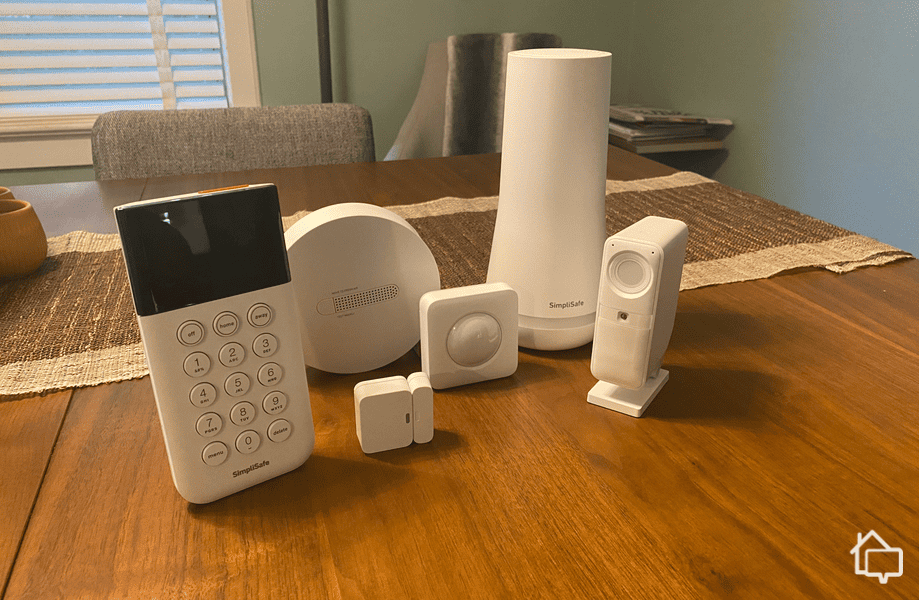
Our SimpliSafe Smoke & CO Detector integrated with the full system and our professional monitoring plan.
Pairing your smart CO monitors with a smart home platform allows for automation, which is where the real value of this feature comes from. Depending on your smart home platform, we recommend configuring your CO monitors to trigger automated responses such as:
- Turning on exhaust fans and ceiling fans when CO is detected to improve air circulation and distribute CO concentration
- Shut off smart switches controlling gas appliances to stop potential sources of the gas leak
- Integrate with security systems for professional monitoring and to receive emergency response
- Flash smart lights to provide visual alerts, especially if you or someone you’re living with has difficulty hearing
These automations enhance safety by providing multiple alert methods and potentially reducing CO sources automatically.
FYI: Visual cues ensure everyone in the house is alerted during an alarm. This is particularly important for people with hearing impairments, whether they’re a resident of the house or visitor.
Cost Analysis and Value Considerations
Now that we’ve covered the benefits of a smart CO monitor, you’re probably wondering how much one costs and whether or not it’s worth the price. Here’s our assessment.
Price Ranges and Features
The CO monitors we tested ranged anywhere from around $50 to $200.
- Budget models ($50-$100) provide basic CO detection with mobile alerts through simple apps. These units typically use Wi-Fi connectivity and battery power.
- Mid-range models ($100-$200) add features like voice announcements, smart home integration, and advanced app functionality. Many include hardwired options with battery backup.
- Premium models ($200+) offer comprehensive safety monitoring, sophisticated apps, professional monitoring options, and extensive smart home integration.
Long-term Costs
We found that most smart CO detectors sold as standalone devices won’t have many ongoing costs, but there are still a few you should consider:
- Professional monitoring subscriptions for security system integration
- Battery replacement costs for hardwired units
- App subscription fees for advanced features (rare but worth checking)
>> Read More: Best Monitored Home Security Systems in 2025
Our Preference: We always opt for CO detectors directly from our security system provider, if available. That way, you get professional monitoring and all of your home safety alerts come from one app. Check out our ADT review for a rundown of our favorite security system with CO detectors.
Expert Recommendations by Home Type
Fitting the CO monitor you purchase to the type of home you rent or own will help maximize its benefits. Based on the features and prices we saw, here are our recommendations for different home types.
Apartments and Condos
In our opinion, renters need monitors that install easily without permanent modifications:
- Battery-powered units avoid electrical work
- Plug-in models work well with available outlets
- Sound detection devices work with existing monitors
The Ring Alarm Smoke & CO Listener works particularly well for renters, as it doesn’t require replacing existing safety equipment. We provide a full rundown of this device in our Ring Alarm review.
Single-Family Homes
If you see yourself living in the same home for years to come, we suggest investing in a comprehensive system with multiple integration points.
- Hardwired monitors provide maximum reliability
- Whole-home systems offer coordinated protection
- Smart home integration enables advanced automation
After testing SimpliSafe, we found their system with a Smoke & CO Monitor offered a sleek design, smart home functionality, and affordable professional monitoring. As an added benefit, SimpliSafe’s prices are relatively low compared to industry averages.
Vacation Homes
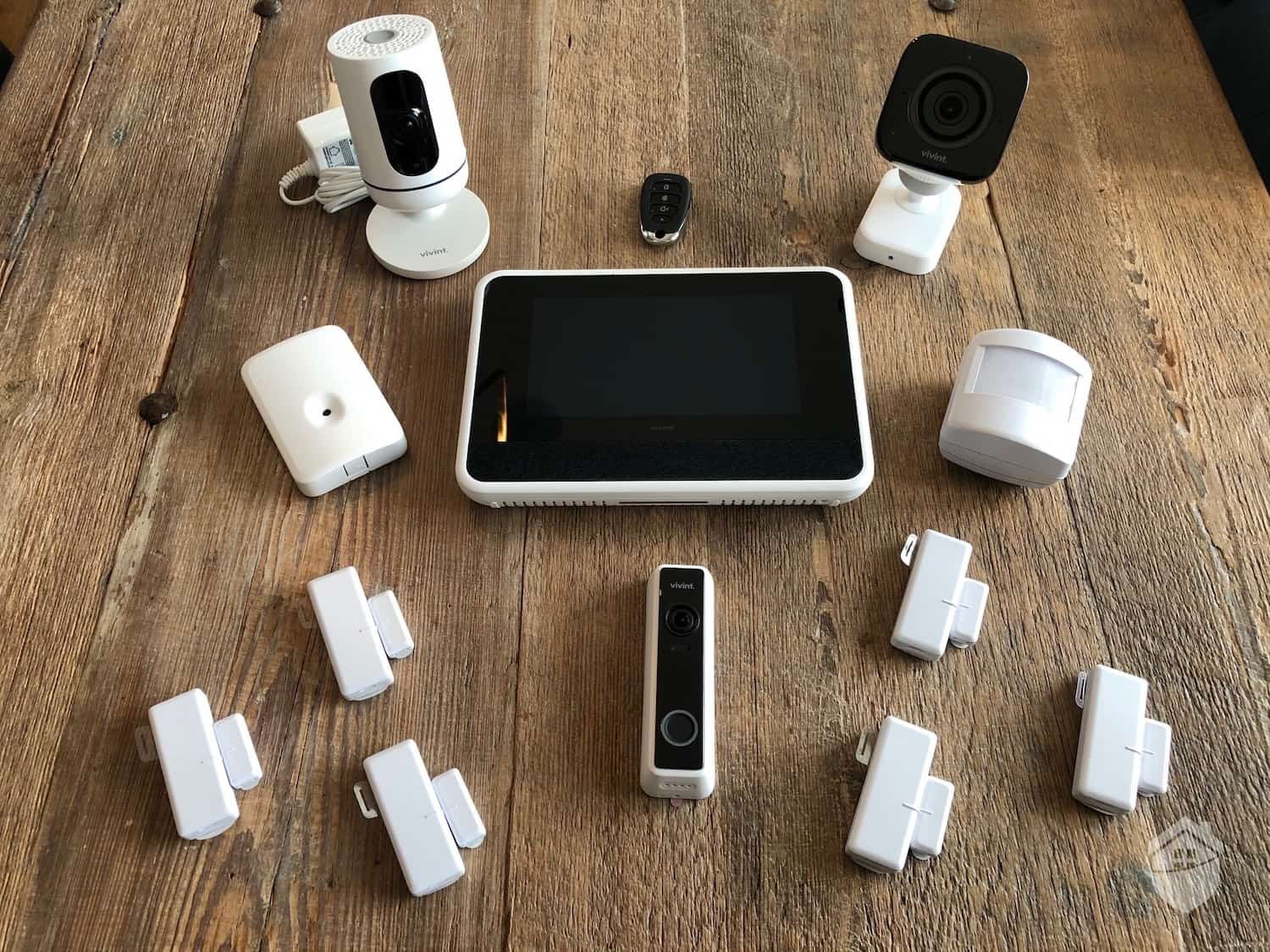
We bought a comprehensive Vivint security system to see how well it could protect a vacation home.
For vacation homes, we’ve concluded that remote capabilities and minimal maintenance are the biggest essentials.
- Visible and audible alerts ensure all visitors notice an alarm
- Long battery life reduces maintenance visits
- Professional monitoring provides emergency response when you’re away
We recommend a Vivint system with their smoke and CO detector for vacation homes. Vivint provides low-maintenance solutions with advanced automation that keeps your home safe even when you’re not there.
>> Read About: Vivint Home Security System Cost and Pricing
Safety Tip: Share access to your CO detector’s alerts with a trusted local contact who can respond to alerts when you’re not nearby.
Final Thoughts: Should You Buy a CO Monitor With Mobile Alerts?
Smart carbon monoxide monitors with mobile alerts offer significantly more safety than traditional units with just a siren. The ability to receive immediate notifications anywhere ensures you’re always connected to your home’s safety status, whether you’re at work, traveling, or simply in another room.
Our testing revealed that the best smart CO monitors balance detection accuracy, alert reliability, and ease of use. While we can’t recommend a one-size-fits-all solution, we can say that all of our favorite solutions were smart CO monitors offered as part of an overall security system. That allows its alerts to work with your security system and enables professional monitoring for 24/7 protection.
Frequently Asked Questions
- How accurate are smartphone alerts from CO monitors?
Modern smart CO monitors send alerts within 15-30 seconds of detection, with accuracy rates exceeding 99% when properly installed and maintained.
- Can smart CO monitors work without an internet connection?
Most smart CO monitors continue detecting and sounding local alarms without internet, but mobile alerts require connectivity. Models with cellular backup maintain alert capabilities during internet outages.
- How long do smart CO monitor batteries last?
Sealed lithium batteries in smart CO monitors typically last 7-10 years, matching the monitor’s sensor lifespan. Hardwired units use backup batteries that last 3-5 years under normal conditions.
- Do smart CO monitors require monthly fees?
Most smart CO monitors work without monthly fees, using your home Wi-Fi for connectivity. Models with cellular connectivity or professional monitoring services typically charge $10-30 monthly.
- Can multiple family members receive alerts?
Yes, most smart CO monitor apps allow you to add multiple users who receive simultaneous alerts. Some models also send text messages and emails to ensure everyone stays informed.
- What's the difference between smart CO monitors and regular ones?
Smart CO monitors add mobile connectivity, app-based monitoring, and integration with home automation systems. Both types provide equally effective CO detection, but smart models offer remote monitoring and notification capabilities.


